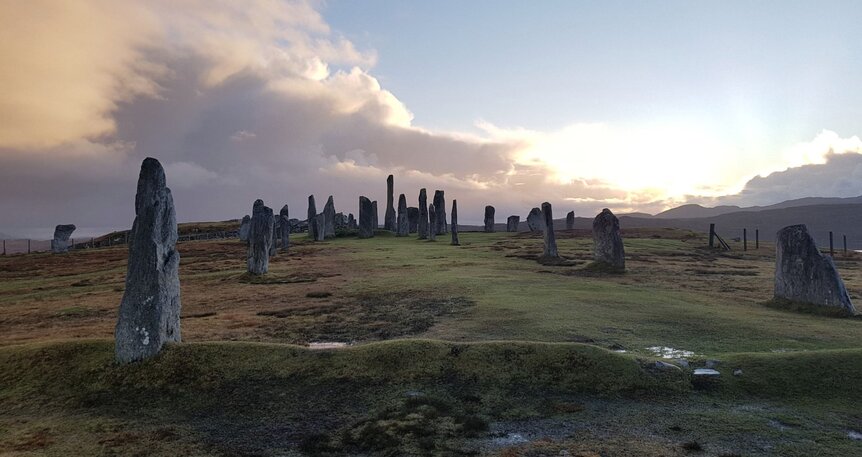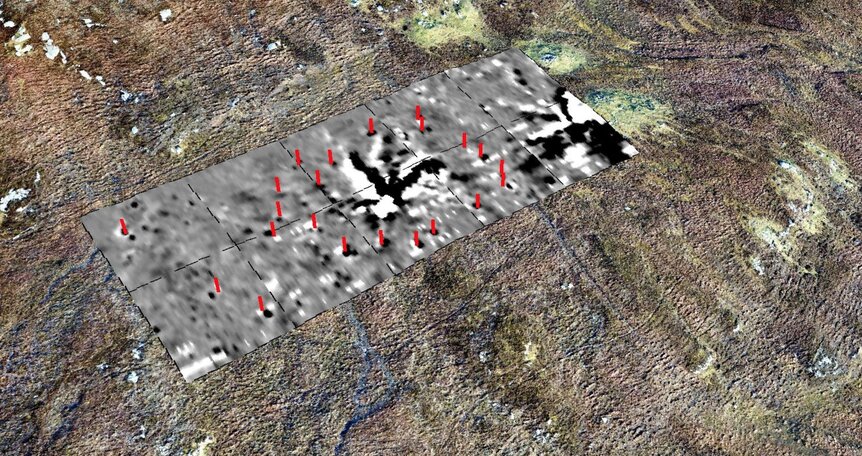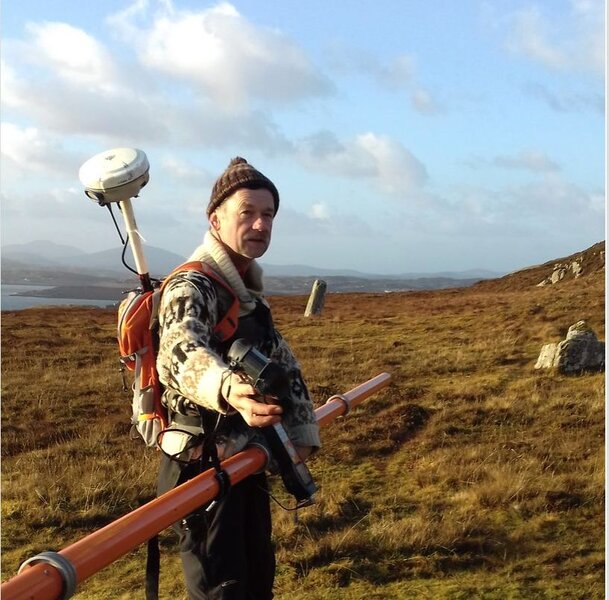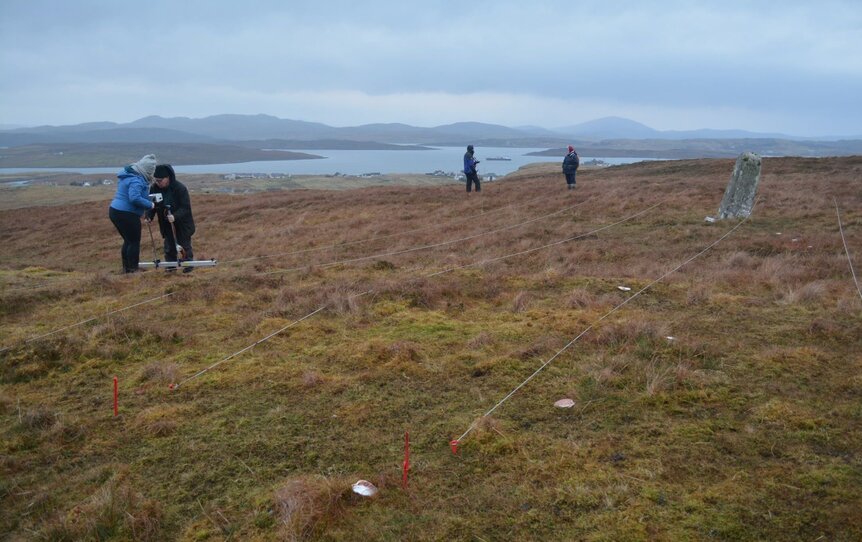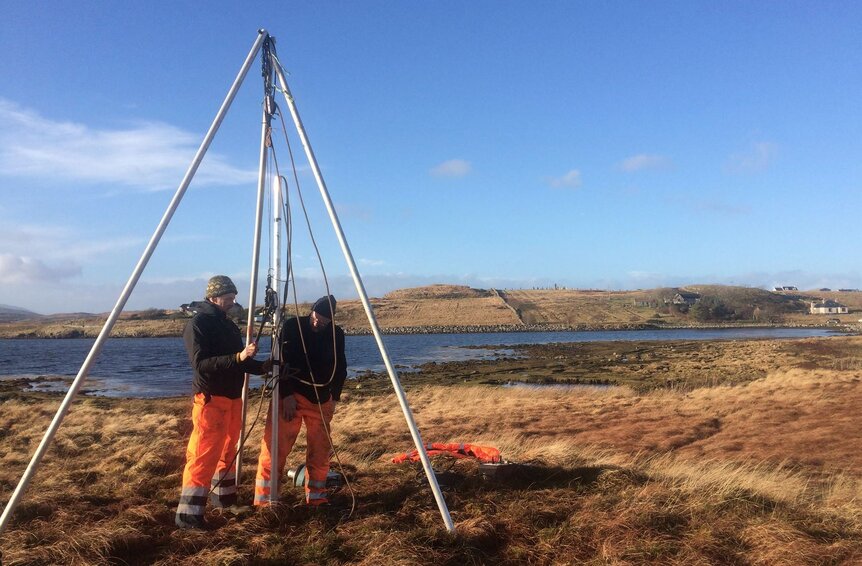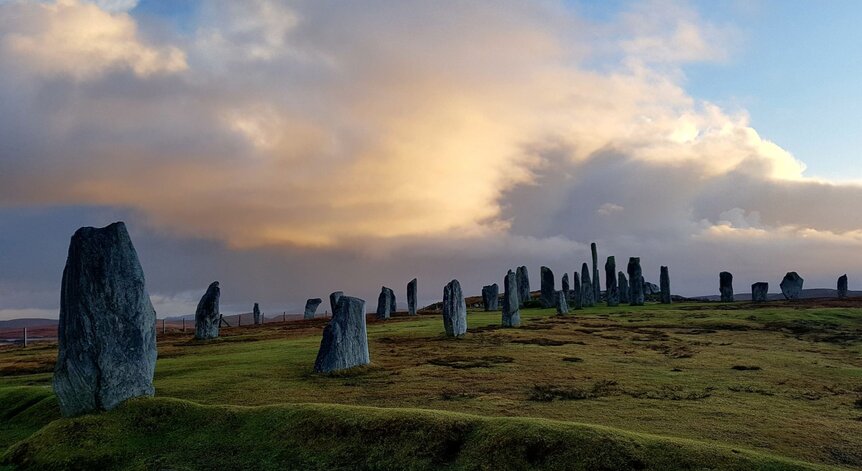Create a free profile to get unlimited access to exclusive videos, sweepstakes, and more!
This scientist is studying ancient lightning rods, but what zapped our ancestors to create them?

Lightning is Mother Nature’s most hair-raising display, a phenomenon that instantly connects us to a more elemental, superstitious past.
Dr. Richard Bates is on a quest to understand humans’ long-time fascination with and connection to lightning. As a professor at the University of St. Andrews in Scotland, Bates is providing researchers around the world with a wealth of new information on the thousands of megalithic rock structures ancient people constructed as both prehistoric lightning rods and methods of harnessing and controlling the enormous energy.
Bates and his team at the School of Earth and Environmental Sciences at St. Andrews recently discovered remnants of an ancient megalithic rock formation near the imposing Standing Stones of Calanais, with the buried site apparently designed to intentionally attract lightning strikes.
The group's findings were published in the online scientific journal Remote Sensing this past December, and explained how the archaeologist and his colleagues went hunting for evidence of undiscovered rock circles hidden under the rolling, peat-carpeted hills near the monument commonly known as the “Stonehenge of Scotland.”
Scotland's legendary structure was created some 5,000 years ago on the Isle of Lewis in the Outer Hebrides off Scotland's west coast. Over the decades, scientists have been well aware of smaller excavation sites scattered around the central stones’ terrain, but their hidden locations have remained unknown until now.
Until Dr. Bates and his team are awarded an official dig license for the site, they won’t know which came first: the lightning or the circles. Bates and his crew will head back to this mysterious plateau to find answers to this question once they secure funding. He finds it intriguing that nobody has run intensive geophysical tests using electromagnetic surface mapping and electrical resistivity tomography before.
SYFY WIRE connected with Dr. Bates to learn more about these supercharged prehistoric sites, what his theories are regarding their intended purpose, how they might have been constructed out of native stone, and the greater cultural significance of their electrifying existence.
What is the prevailing hypothesis on the reasons and functions of this lightning-focused rock structure?
There are a number of current hypotheses for these structures. Most have some sort of alignment with sun and/or lunar cycles and therefore there is the thought that they were concerned with practices related to the natural cycles of the year, for example farming practice or even the migration of animals. You could call them ritual monuments; many have also been associated with marking both birth and death.
What were the University of St. Andrews' team’s goals when hunting for satellite circles?
The main goal is to try to reconstruct the lost landscapes within which the stone circles were built in order to understand more about the people who built them. The curious thing about the setting on the outer Isle of Lewis, where the stones are located, is that in the Loch Roag valley, for example, there are over 15 of these stone monuments with many of them being complete or almost complete circles. So a lot of activity. However, we have found virtually no remains of burial tombs or evidence of where or what they lived in.
The land today is dominated by peat bog and this has grown up and over much of the landscape that would have existed when the stones were erected. The project is trying to see through the peat to what might be left of the previous landscape.
Are there similar examples of these lightning lures elsewhere on the planet or are they unique to the British Isles?
Lightning as a monumentalized phenomena has been recorded at other archaeological sites, such as the petroglyphs in California and Peru for example. In the Buffalo Slough Mound Group in South Dakota, it is also associated with both natural and accentuated natural features of the landscape so we know that in the past importance has been attached to lightning.
What role might lightning have played in forming the beliefs and rituals of agriculture-based Neolithic tribes?
Certainly the association of lightning with severe weather has been noted in many prehistoric societies, again for example in rock art where there is thought to be an association with the zig-zag motif and that of the snake, an animal often linked to storms. Or perhaps there could have been an association with fire.
How long would it have taken them to construct these monuments?
It would certainly have taken some considerable effort to build these monuments however they are not as complex or involve such large stones as sites like Stonehenge. Our preliminary investigations on the type of material for building them (they are all made of the local Lewisian Gneiss rock) could have been found all around them. Transporting the stones, some of which weigh up to 1 tonne would have required some effort but a dedicated group of individuals may have been able to build them in a matter of months.
Is there evidence of pagan ceremonies linked to them?
No definitive evidence for any type of ceremony or practice has yet to be discovered about this particular set of monuments, as the landscape is still buried around most of them.
Exactly how were they built with such gargantuan stone blocks and why the prevalent use of granite rocks?
This could have been achieved using lodestones similar to those that the Vikings used for navigation. Once known, then they set up the stone circle around it. If the strike came after the stone circle was erected then there would have to have been something at the center to attract the lightning preferential, as I believe the chance of a strike exactly at the center would have been very unlikely otherwise.
What other possible theories are there about why these stone lightning rods were constructed?
There has been a fair amount of experimental archaeology done in trying to understand how to move such large stones. Most involved dragging the stones on either rollers, over frozen ground, and or/ using some form of lubricant such as the local seaweed. Human power was almost certainly used but we do not know if they could also have harnessed the power of animals to help pull them.
Once in place — in most instances where a soil horizon existed over the bedrock — shallow slots were cut into the soil and then the stones were slotted into this. In one case, the soil must have been too thin to cut a slot and the stones were just supported by small boulders. This was clearly not an effective way of supporting the stones and they have now all fallen over.
Can you reveal the project's next phase?
What we need to do next is obtain financial backing in order to extend the geophysical studies over the other stone circle sites and also to do so in a greater area around the present site. This will hopefully tell us if it is unique or part of a pattern. After that, we need to obtain permission to dig through the peat at the present site and see if there is any visual manifestation of the strike at the site.
